#bennell
Text
The cuttest couple in the world 🩷

#supernatural#supernatural family#ruth connell#rob benedict#bennell#spnedit#spncast#spn edit#spn cast#spn family#spn#rowena macleod#chuck shurley#chuwena#ruthie connell#supernatural edit
14 notes
·
View notes
Link
Embark on an astronomical adventure with Andrew Dunkley and Professor Fred Watson in the latest episode of Space Nuts, where they celebrate a historic moment for Australia with the announcement of the nation's first female astronaut, Catherine Bennell Pegg. Discover her remarkable journey to the stars and the aspirations she harbors for future Australian spacefarers.
Then, take a volcanic voyage to Jupiter's moon Io with Juno's latest flybys, revealing a lava lake in Loki Patera so vast and smooth it mirrors the gas giant itself. Marvel at the newly dubbed Steeple Mountain, a geological spire that evokes Earth's own gothic cathedrals, and ponder the mysterious forces sculpting Io's tumultuous terrain.
The episode continues to probe the secrets of the Solar System as Juno also sheds light on Jupiter's elusive water content, challenging previous theories about the giant planet's formation. And finally, the duo turns their gaze to Mars, where a new theory suggests that humans may inadvertently be unearthing the Red Planet's methane mysteries with the tread of rovers.
From celebrating trailblazing astronauts to unraveling the enigmas of alien worlds, this episode of Space Nuts is a cosmic journey not to be missed. Tune in for these interstellar stories, and remember to bring your curiosity as we explore the wonders of our universe.
Support the podcast and unlock a universe of knowledge by visiting https://www.spreaker.com/podcast/space-nuts--2631155/support. Don't forget to subscribe for more deep space discoveries and celestial insights with Space Nuts, where the cosmos is just a play button away. Until our next cosmic rendezvous, keep your eyes to the skies and your questions at the ready.
And for your daily space news fix, check out the team at our sister podcast 'Astronomy Daily the Podcast. Available wherever you get podcasts or stream from the website at www.astronomydaily.io
#astronaut#australia's#australian#bennell#catherine#female#first#germany#in#io#jupiter's#lake#lava#mars#methane#on#pegg#space#training#water
0 notes
Text
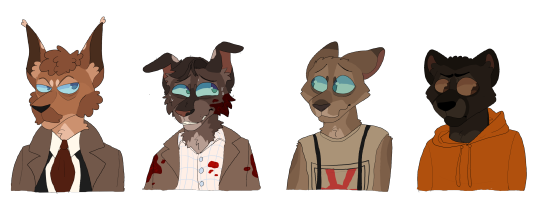
have some misc horror guys!
left to right it's: Matthew Bennell from Invasion of the Body Snatchers, Lionel Cosgrove from Braindead/Dead Alive, Freddy Hanscom from return of the living dead, and OJ Haywood from Nope!
It was very fun to try and anthropomorphize them ngl. i haven't checked how these colors look on my phone yet, so hopefully it's not too too bad lmao

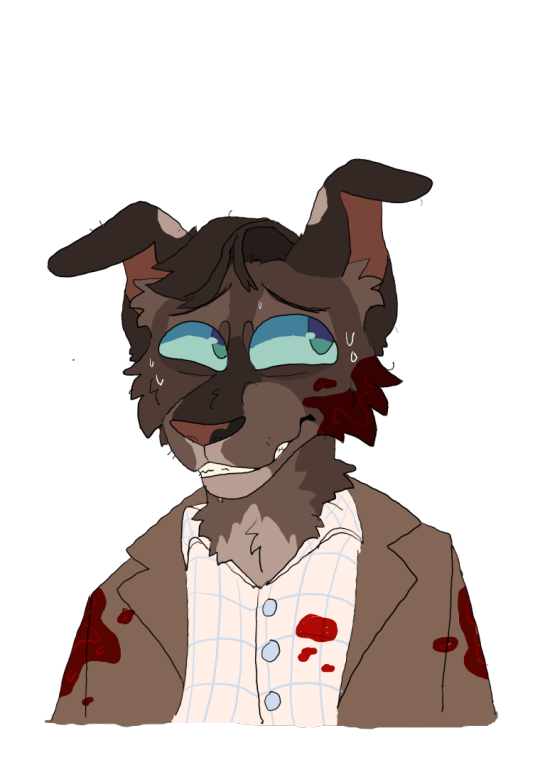
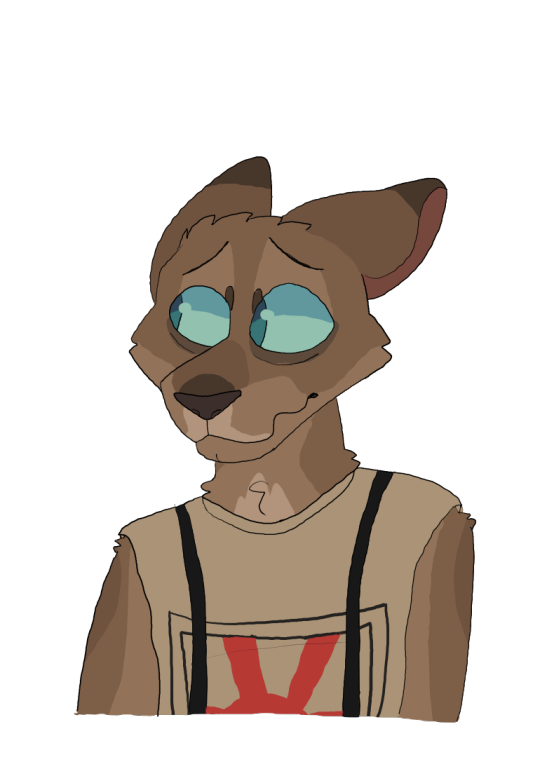

#Matthew Bennell#Lionel Cosgrove#Freddy Hanscom#OJ Haywood#invasion of the body snatchers#Braindead#dead alive#Brain Dead/Dead Alive#nope 2022#my art
46 notes
·
View notes
Photo
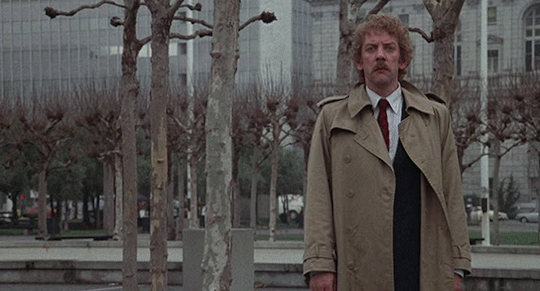
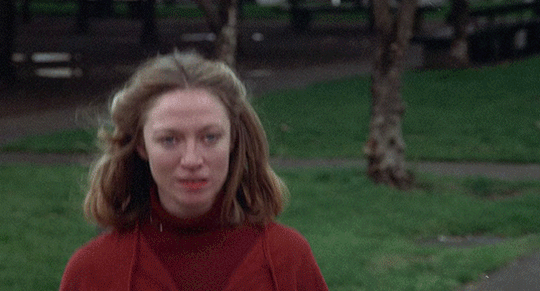
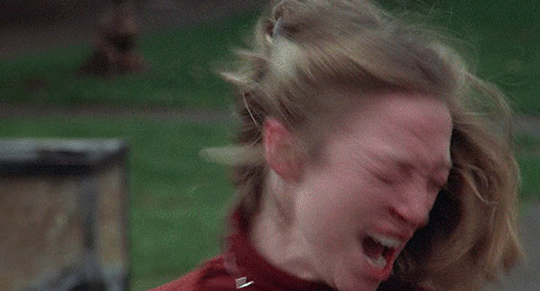


Invasion of the Body Snatchers (1978) // Dir. Philip Kaufman
#Invasion of the Body Snatchers#Matthew Bennell#Donald Sutherland#Nancy Bellicec#Veronica Cartwright#Philip Kaufman#Horror#Gifs#Movie#Movie Gifs#Invasion of the Body Snatchers Gifs#AVGifs#AVMovie#AVMovieGifs#AVIOTBSGifs#AVHorror
111 notes
·
View notes
Text
So I need to go on a rant about my ships (Rannefischelle edition)
(That's Razor x Bennett x Fischl x Noelle)
I PHYSICALLY NEED THEM TO INTERACT IN GAME.
Which is mostly on Noelle's end with the rest and then Fischl and Razor (I can't remember if they have voicelines about each other) BUT I JUST THINK BENNETT SHOULD UNITE THEM.
Well so the first thing you need to know getting started in Rannefischelle or any Noelle ships inside it: Bennett has invited Noelle to join the Adventurer's Guild MANY TIMES


And it's not that she doesn't like the idea. It's just that being a maid for the knights and trying to become one is everything she's ever known for a while now. And she's not gonna become one any time soon because Jean knows she doesn't have what it takes *mentally*. But there's a HUGE miscommunication where Jean just DOESN'T TELL HER THAT SO SHE CAN SOMEHOW IMPROVE.
So I just firmly believe that sooner or later Noelle is just gonna. Very likely end up collapsing and giving up on becoming a knight after realizing she's done everything and more for most of them and barely gotten any recognition out of it.
So in my utopia she joins the Adventurer's Guild. And I think she would have an AWESOME time with those three.


And I also think Noelle would be the perfect addition to Fischl's little roleplay. (Yeah, eventually the other three know she isn't actually princess Fischl, and Fischl herself doesn't feel the need to dive into that fantasy daydream of hers to escape reality, but they keep doing it between them because it just feels fun and light)
Anyways back to the main point: Noelle would be amazing for Benny's Adventure Team. Even if you don't wanna look at it romantically. She would be an amazing help for him, even if she isn't immune to his bad luck, she's determined enough to find her way around it.
My favorite thing to think about is the four of them having a "camp date" together. They tell Bennett to just sit down while the other do stuff, to assure everyone will be safe, and 100% Noelle is the one doing the cooking. Which takes me to: Them sharing specialty dishes with each other and they would all love it.
(I also just found out Razor doesn't like vegetables and Noelle's favorite dish is satisfying salad, and Fischl (and Oz) don't like Sweet Madame and Bennett is a pro at it... Poor them.)
For Bennett there's not much trouble since he's also a pro at other meat dishes so no problems there, but I do think they should get Razor to try vegetables. Maybe if they season it well enough? Eating any grass in the wild just like that surely isn't very good)
Anyways my ramble is over (for now), I just wanted to get this out because I have to cook my own food over here
#talk tag#rannefischelle#rannett#fischelle#fischnett#bennelle#fischzor#I don't even know if they have a ship name honestly#razelle#razor x fischl#razor x noelle#bennett x noelle#bennett x razor x fischl x noelle#life is tough in these polyamory rarepair shipper lands
15 notes
·
View notes
Photo
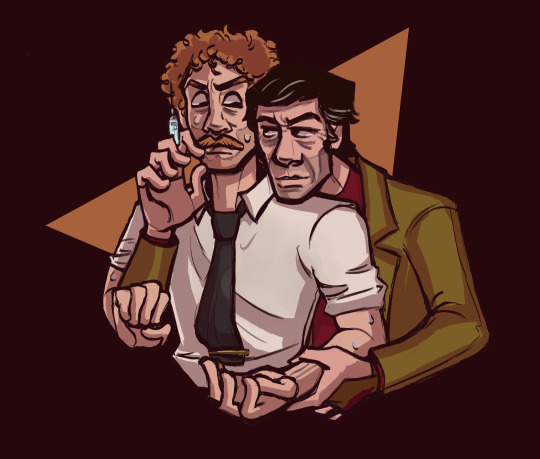
ooo join the collectiveee you know you want tooo
#silly movie me thinks they used to date#invasion of the body snatchers#matthew bennell#david kibner#leonard nimoy#donald sutherland
45 notes
·
View notes
Photo
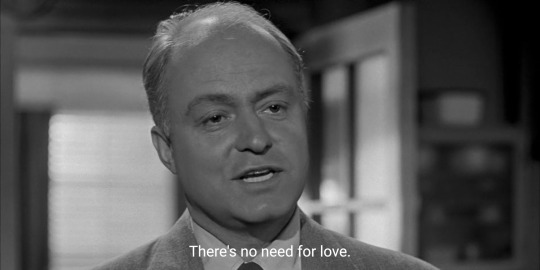


There’s no need for love
#invasion of the body snatchers#don siegel#kevin mccarthy#dana wynter#dr. miles bennell#becky driscoll#scenephile#science fiction#horror film#1956#movie quotes#film quotes#movie scenes#film scene#movie scene#pod people
51 notes
·
View notes
Text

Invasion of the Body Snatchers (1978)
Dir. Philip Kaufman
DoP. Michael Chapman
3 notes
·
View notes
Text
Body Horror Beatdown, Match 16, Round 1
Vote for your favorite:
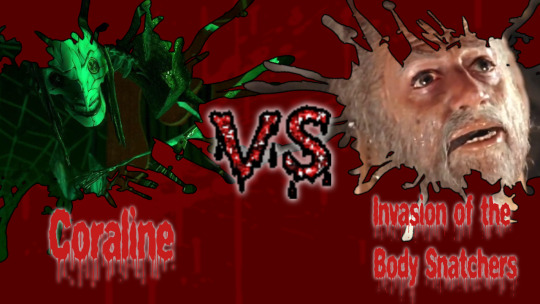
Propaganda under the cut.
Coraline:
Be careful what you wish for.
"The button-eyes thing. The Other Mother's transformation into a giant spidery thing. the Other Father slowly becoming more twisted and bad. Other Wybie having his mouth sewn into a permanent smile. The Other Spink and Forcible being a taffy monster. And how can I forget the guy who's just rats."
Invasion of the Body Snatchers:
You'll never close your eyes again.
(synopsis) "In Santa Mira, California, Dr. Miles Bennell (Kevin McCarthy) is baffled when all his patients come to him with the same complaint: their loved ones seem to have been replaced by emotionless impostors. Despite others' dismissive denials, Dr. Bennell, his former girlfriend Becky (Dana Wynter) and his friend Jack (King Donovan) soon discover that the patients' suspicions are true: an alien species of human duplicates, grown from plant-like pods, is taking over the small town."
#bodyhorrorbeatdown#body horror beatdown#gore#body horror#round 1#polls#coraline#coraline 2009#invasion of the body snatchers#invasion of the body snatchers 1978#henry selick#philip kaufman
55 notes
·
View notes
Photo

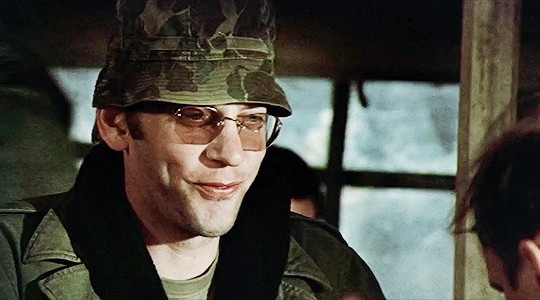
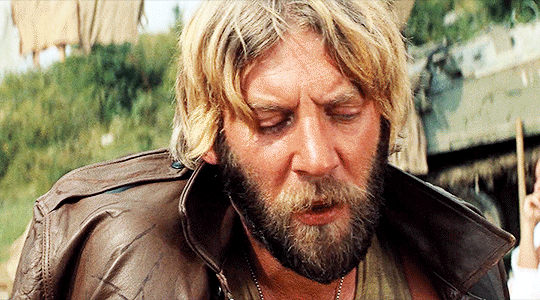

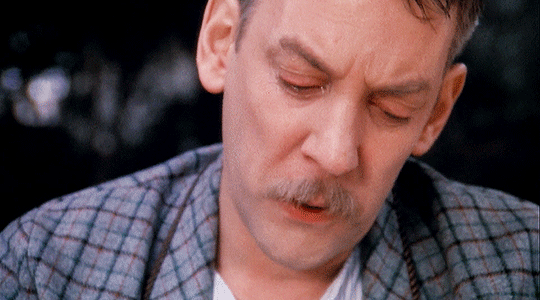


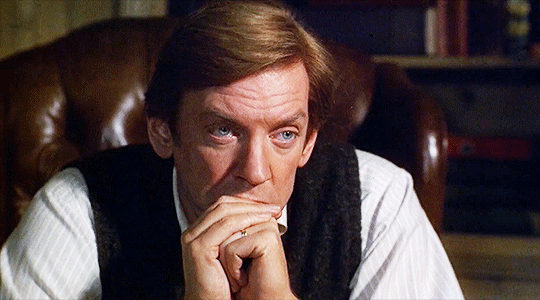

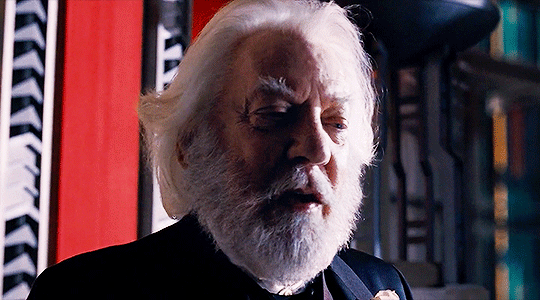
My top 10 Donald Sutherland performances:
Vernon Pinkley in The Dirty Dozen (1967)
Hawkeye Pierce in M*A*S*H (1970)
Oddball in Kelly’s Heroes (1970)
John Baxter in Don’t Look Now (1973)
Homer Simpson in The Day of the Locust (1975)
Liam Devlin in The Eagle Has Landed (1976)
Matthew Bennell in Invasion of the Body Snatchers (1978)
Calvin Jarrett in Ordinary People (1980)
Jerry O’Neill in Space Cowboys (2000)
President Snow in The Hunger Games (2012)
#donald sutherland#happy belated birthday#film#mash#kelly's heroes#the eagle has landed#the day of the locust#invasion of the body snatchers#ordinary people#don't look now#the dirty dozen#space cowboys#the hunger games#60s#70s#80s#00s#the eagle has landed is a supremely underrated film#time for a rewatch? i think so
374 notes
·
View notes
Text
Horror Movie of the Day: Invasion of the Body Snatchers (1978)
There’s a psychiatric condition known as the Capgras Syndrome: the irrational belief a person close to us has been replaced by an identical stranger. Tied to some fairly intense forms of mental illness, it can easily spiral out of control and create a sense of isolation and paranoia. But, what if multiple people suddenly started saying this at the same time?
When a strange species of flower starts appearing across the bushes and trees across the city of San Francisco, health inspector Matthew Bennel has to make this question to himself. His close friend and coworker Elizabeth Driscoll is apparently experiencing this situation: her partner Geoffrey is suddenly acting cold and distant. Matthew’s initial suggestion is for her to talk his psychiatrist friend David Kibner, but similar stories keep popping up. And then a strange, incomplete looking body appears on the spa of another of his friends. That also seems to try to mimick them.
It’s clear this is no mere delusion. Something more sinister is going on.
A remake of the eponymous 1956 classic (which is in turn based on the novel The Body Snatchers by Jack Finney), this movie takes the same core story idea of its source of inspiration and flips it on its head by simply changing the setting. Instead of taking place within the confines of a small town, having the story take place in an urban environment changes the story dynamics and even themes. Instead of an outwardly placid town where people become strangers, you get the cold strangers becoming uncannily close to each other as suddenly the city masses are all staring at you in an urban alienation nightmare.
It’s a fantastic remake of an already great movie, upping the ante while still paying respectful homage to what came before. With a stiffling, dissonant sound design, the cynicism of 70's cinema, and a splice of body horror the end result is an all time great of the genre.

#roskirambles#halloween#horror movies#donald sutherland#brooke adams#leonard nimoy#jeff goldblum#veronica cartwright#philip kaufman#invasion of the body snatchers#alien horror
6 notes
·
View notes
Text
'Invasion of the Body Snatchers' in seventies San Francisco on Max and Prime Video
Invasion of the Body Snatchers (1978), Philip Kaufman’s remake of the 1956 classic, updates it from the homespun innocence small town fifties America to the busy urban modernity of San Francisco of the seventies and gives the metaphor a new context.
Donald Sutherland takes the lead as Matthew Bennell, a field agent for the Department of Health, and Brooke Adams is colleague Elizabeth Driscoll, a…
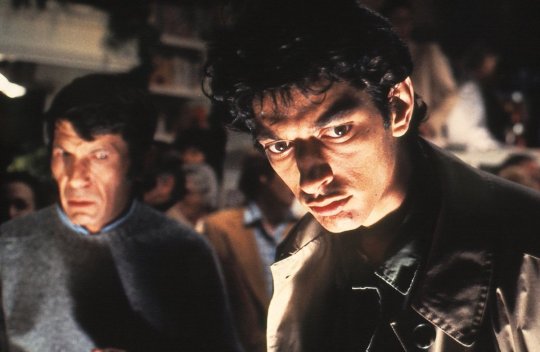
View On WordPress
#1978#Amazon Prime Video#Art Hindle#Blu-ray#Brooke Adams#Don Siegel#Donald Sutherland#DVD#Invasion of the Body Snatchers#Jack Finney#Jeff Goldblum#Kevin McCarthy#Lelia Goldoni#Leonard Nimoy#Max#Michael Chapman#Philip Kaufman#Robert Duvall#San Francisco#Tom Luddy#Veronica Cartwright#VOD#W.D. Richter
3 notes
·
View notes
Photo

Invasion Of The Body Snatchers (1978)
FROM DEEP SPACE… THE SEED IS PLANTED… TERROR GROWS
The first remake of the paranoid infiltration classic moves the setting for the invasion, from a small town to the city of San Francisco and starts as Matthew Bennell notices that several of his friends are complaining that their close relatives are in some way different. When questioned later they themselves seem changed, as they deny everything or make lame excuses. As the invaders increase in number they become more open and Bennell, who has by now witnessed an attempted “replacement”, realises that he and his friends must escape or suffer the same fate. But who can he trust to help him and who has already been snatched?
#sci-fi movies#sci-fi movie posters#horror movies#horror movie posters#invasion of the body snatchers
10 notes
·
View notes
Note
Hola
Cómo trataba MJ a los animales??? Es que he escuchado que tenía un zoológico en su rancho.
Hola. Precisamente salio un documental hace como un mes sobre el abuso/negligencia que sufrieron los animales en Neverland. No lo he visto completo, solo vi la entrevista que le hicieron a Jane Goodall acerca de los chimpancés y el oso que Jackson tenia (y reveló cosas bastante malas acerca de eso) (Puedes ver aqui una parte del documental, pero sin subtitulos).
Pero incluso sin adentrarnos tanto y solamente analizando por encima la relaciones de Jackson con sus mascotas exóticas, se puede ver como Jackson veía a los animales como accesorios. Por ejemplo, a Bubbles, en ves de darle un recinto para que pudiera socializar con otros chimpances y permitirle expresar comportamientos lo mas cercano que lo haria si estuviera en libertad; decidió vestirlo, hacerle bailar y convertirlo en su payaso personal hasta que se volvió lo suficientemente grande para convertirse en un peligro. Llevo a su llama a los estudios de grabación para mostrarlos, ignorando totalmente que ese no era un recinto adecuado y que las llamas donde menos quisieran estar era en un estudio. Osea hacia lo que él quería para satisfacerse, no lo mejor para el animal (ni para los propósitos de conservación de ese animal, también debo decir).
Simplemente eran como juguetes para él, y también creo que eran una forma de atraer la atención de niños a su rancho. De hecho, varios pedofilos utilizan mascotas exóticas para ese objetivo:
[Los pedofilos] Tienen pasatiempos que son como los de los niños, como coleccionar juguetes populares y caros, tener reptiles o mascotas exóticas, o construir modelos de aviones y automóviles.
Hubo un caso de un abusador de menores, Barry Bennell, que me hizo acordar mucho a Jackson. En su casa, él también estableció una especie de zoologico en donde tenia un mono y un lince. Las demas cosas que tenia en su casa (juegos de arcade, juguetes), me hizo recordar mucho a Neverland.
4 notes
·
View notes
Text
“...Interest in a presumed political allegory has dominated critical response to the story, as in Harry M. Benshoff’s observation that the “human-looking monsters have been thought to reflect a paranoid fear of both mindless U.S. conformity and Communist infiltration, wherein a poisonous ideology spreads through small-town USA like a virus, silently turning one’s friends and relatives into monsters.” No specific ideology fits the story exactly. Rather, the snatched bodies of an American small town register the uncertainties raised by social and political transformation and scientific and medical discoveries in the postwar world.
Benshoff’s metaphor picks up on the viral features of the pods that run subtly from Finney’s novel through the films, becoming explicit in Cook’s version, in which the human beings succumb to an aggressive alien virus implanted in primordial DNA. In all versions, Body Snatchers recounts the story of an ecological invasion that turns willful and even malicious with the incarnation of the pod people. The pods’ viral features fleshed out the viral agency emerging in the medical literature and mainstream media and helped to develop the conventions of the incarnated virus and the epidemiological struggle over the fate of humanity that characterized the outbreak narrative.
The Body Snatchers offered a mythology for the moment: a story about the uncertain nature of human being conceived as a struggle for the future of humanity. Finney’s protagonists experience the terror of utter estrangement when they find themselves suddenly certain that everything is different despite the evidence of their senses, which tells them that nothing has changed. It is a story about carriers, spawning one of the few films of the genre, as Benshoff notes, in which the monsters physically resemble human beings.
While Burroughs encourages inspection of the nature of human beings, Finney forestalls any such inquiry. “Humanity,” in his novel, is at risk, but never in question, and although it seems precarious, it proves finally indestructible. The novel chronicles the gradual discovery by the doctor narrator, Miles Bennell, of the source of his patients’ disturbing insistence that close relatives are not who they claim to be in the personality theft perpetrated by the intergalactic pods. Of the uncle who raised her, one woman puzzles, “He looks, sounds, acts, and remembers exactly like Ira. On the outside. But inside he’s different. His responses . . . aren’t emotionally right. . . . There’s something missing.”
The difficulty of detecting the pod people’s subtle loss of humanity makes those who notice it seem delusional. Naturally, the experts consulted in this case assume that they are witnessing a psychological phenomenon, what Miles’s psychiatrist friend Mannie Kaufman calls “the first contagious neurosis” he has ever seen, “a real epidemic” (23) of an imagined disease, panic spreading “like a contagion” (98). The problem, of course, turns out not to be in the minds but in the snatched bodies of the residents.
Having isolated Santa Mira from the rest of the world, they are invasive and colonizing: actively determined to spread. Miles and his girlfriend, Becky Driscoll, watch in horror from Miles’s office while three farm trucks loaded with pods drive up to the town center and begin to distribute the pods to townspeople with “families or contacts” in surrounding towns (147). They are also transformative, leaving no one “what he had been, or what he seemed still, to the naked eye. The men, women, and children in the street below . . . were something else now,” Miles explains, “every last one of them. They were each our enemies, including those with the eyes, faces, gestures, and walks of old friends. There was no help for us here except from each other, and even now the communities around us were being invaded” (149).
Humanity is negatively defined by the pod transformation: they become automatons, lacking passion, compassion, and emotions of any sort. They also lose their uniqueness in the display of a hive mentality. Depictions of mass hypnosis and mental control had long preceded Cold War science fiction. David Seed identifies a gothic tradition that associates a horrifying loss of humanity with the state’s aggressive manipulation of its citizens.
Through the conventions of horror, the loss of humanity becomes a loss of individuality and is configured through features designed to provoke disgust, such as the decaying body and oozing innards of the zombie. By the 1950s, horror and disgust were implicit in the idea of mind control. Finney’s novel conjoined these associations with contemporary technological innovations and scientific theories to dramatize the possibility of a transformational loss of humanity and the threat that imperceptibly changed human beings could in turn pose to the state.
While Richard Condon’s 1959 novel The Manchurian Candidate pointedly showed how mind control could turn a human being into an assassin, Finney’s novel depicted the disturbing biological mechanisms of mental contagion, and virology supplied the vocabulary through which Finney explained the metamorphosis. When Miles, Becky, and their friends Jack and Theodora Belicec begin to piece together the phenomenon, the pod people become viral.
Following an odd clue in a daily newspaper, Jack, an author and attentive reader, has led them to the index case, the former botany professor Bernard Budlong, who explains the pod phenomenon in language that might have been lifted from a virology textbook: the pods are a life-form, although not in a conventional sense, and they have arrived on earth “by pure chance, but having arrived, they have a function to perform. . . . The function of all life, everywhere—to survive” (152).
Stressing their lack of malevolence, he concedes that “the pods are a parasite on whatever life they encounter. . . . But they are the perfect parasite, capable of far more than clinging to the host. They are completely evolved life; they have the ability to re-form and reconstitute themselves into perfect duplication, cell for living cell, of any life form they may encounter in whatever conditions that life has suited itself for” (153).
Understanding how the pods work entails coming to terms with a new conception of human being, Budlong explains, as he cautions Miles not to be trapped by his limited assumptions about life. Noting that Miles’s grandfather would have been dubious about radio waves, Budlong anticipates that Miles will be similarly skeptical of the insights that the human body “contains a pattern” that “is the very foundation of cellular life” (155), that “every cell of [an entire body] emanates waves as individual as fingerprints” (155), and that “during sleep . . . that pattern can be taken from [the sleeper], absorbed like static electricity, from one body to another” (155–56), which is precisely what the pods do.
This description recasts individuality: every human being is unique, but also predictable, conforming to a pattern. Every individual can be reducible to patterns of “information” and can therefore be “snatched.” Budlong’s explanation rehearses the version of information theory that Norbert Wiener had popularized in The Human Use of Human Beings. Wiener had declared a “pattern . . . the touchstone of our personal identity. Our tissues change as we live: the food we eat and the air we breathe become flesh of our flesh and bone of our bone, and the momentary elements of our flesh and bone pass out of our body every day with our excreta. . . . We are not stuff that abides, but patterns that perpetuate themselves.”
Noting that a “pattern is a message, and may be transmitted as a message,” and drawing, like Budlong, on the patterns of sound and light that make radio and television work, he contemplates “what would happen if we were to transmit the whole pattern of the human body, of the human brain with its memories and cross connections, so that a hypothetical receiving instrument could re-embody these messages in appropriate matter, capable of continuing the processes already in the body and the mind, and of maintaining the integrity needed for this continuation by a process of homeostasis” (96).
If Wiener suggests that the human body is information that could conceivably be transmitted (a sort of human fax), The Body Snatchers represents the potential abuse of that information—the alienability of the human personality. In response, Finney’s story insists that humanity consists of something at once intangible and physiological that cannot be reduced to information. The pods in The Body Snatchers do not exactly reproduce the human beings whose information they steal.
Like viruses, they replace that alienable information with themselves, something distinctly not human. While their initial introduction into the earth’s ecosystem was accidental—an “invasion” in the ecological sense—their mandate to survive turns them into willful carriers: “From the moment the first effective changeover occurred, chance was no longer a factor” (160). Family members and service providers, “delivery men, plumbers, carpenters, effected others” (160).
The effected changes seem initially passive, brought about with the least sense of conscious agency it is possible to convey. Effected, however, invokes the more expected infected, which implies the deliberate spread of a disease. When the pods take human shape, they evolve into unmistakably sinister, cunning, and conniving beings, a conspiratorial race of carriers. The concept of an invasion, which was added to the title with the 1956 film, Invasion of the Body Snatchers, becomes more pronounced with each version.
Like any viral invasion, it comes from without and proceeds to take over the host’s bodily functions and mechanisms to reproduce itself. The animation of this viral agent is a stock feature of outbreak narratives, and it shows how and why they readily generate narratives of bioterrorism. The scale of the danger escalates rapidly to a species-threatening event. Budlong explains that the pods have used up the resources of every planet on which they have landed and will use up the earth’s within about five years and then move on.
Miles and Becky are not convinced by his justification that human beings similarly have used up many of the earth’s resources. “You’re going to spread over the world?” Miles asks in disbelief. And Budlong maps out the conquest of “this county, then the next ones; and presently northern California, Oregon, Washington, the West Coast, finally; it’s an accelerating process, ever faster, always more of us, fewer of you. Presently, fairly quickly, the continent. And then—yes, of course, the world” (163).
Budlong’s five-year forecast resembles the Soviet’s Five Year Plan, summoning the predictions made in the United States about the industrializing Soviet state and explaining readers’ temptation to read the novel as a simple political allegory, despite Finney’s demurrals. The wasted police state that Finney describes offers readers a glimpse into the effects of Communist infiltration on prosperous small-town USA.
But the pods are more generally colonizers, and the apocalyptic vision of world conquest and rapidly expended resources expresses colonizing anxieties in environmental terms, linking a global exhaustion of resources to a terrifying loss of humanity; social and political transformation becomes a threat to “humanity” that shades into an ecological catastrophe.”
- Priscilla Wald, “Viral Cultures: Microbes and Politics in the Cold War.” in Zombie Theory: A Reader
5 notes
·
View notes
Text
common names + famous people names with diacritic marks in them
Aldenden Aldenet Aldentonter Aldon Aldonte Aldonáe Aleyon Antefan Antonáe Ardel Arlan Arlancé Arliko Armaker Armakeritt Arman Armandé Arrett Arriandené Arrius Arrod Augus Auguston Avend Avenick Badden Badwing Badwitt Baian Baianderren Baiandrias Baias Bairk Balené Balinté Balton Baltonty Baltonáe Benaman Bennell Bennet Bentë Benée Beyer Beyersey Brace Bracin Brahad Brahadden Brannic Brante Branton Bravigné Bravincé Bredick Bredict Brell Breth Briastustus Brich Brick Britz Brius Bronto Bronty Bronté Bronáe Carianet Carict Carlinfory Carlon Carron Carwick Chadden Chadwi Chadwict Chadwin Chaelloë Chaellwego Chalcoln Chalton Chamaker Chamill Chanamiego Chank Channetz Chaston Chellwooder Chentë Chetz Chlon Chlott Chlotty Colan Coleneth Coles Cored Coredich Coritt Cowardeus Cowarrias Cowarwi Cowle Dalcotte Dalker Dallik Daltonáe Damaker Damakerron Daman Damanarren Damandric Damille Danden Dandé Danto Danton Dantë Dardell Dardenden Darder Daren Darene Daret Dareth Darick Darlan Darlandrius Darlon Darlott Darloë Darred Darredict Darretz Darrichas Darronáe Darrémon Darth Dewton Dillennith Dilloë Dillwood Dirdell Dirden Dirder Dirdeus Domel Domeliko Domelles Domellweger Domen Domenneth Domené Donamaker Donce Donte Dontontë Donty Dordené Dortery Dorth Edick Edict Edisonáe Eldellwell Eldendel Eldenedick Eldon Eldontonas Elvigny Elvigné Elvignée Elvincé Elving Elvintery Elvinton Elvitz Emell Emendé Emente Emenée Emien Emiennet Emillwel Eriante Ericharloël Erill Erily Erith Erius Flendonté Frémon Frémonty Gagny Galcolm Galec Gales Galin Galto Galton Garedict Garendonton Garict Garle Garlené Garrian Garré Garwick Gastus Gastustus Gavigny Gerle Germante Gerrel Gerter Gracius Grahael Graharic Graharré Grahas Granarrick Grand Grank Granté Grantë Gravigny Gravigné Gravincé Gravinté Halemin Halleyer Halton Hanart Handé Hardenell Harenée Harrendeus Harrichad Harrémon Harte Haydelinton Hayder Haydeus Haydeuston Herterritt Hunte Hunton Huntonaman Huntonarron Huntonton Hunté Isace Isaciuston Isairk Issace Issaciuston Issaird Issairk Jacius Janas Janelli Jantonovan Jardend Jaren Jarené Jarles Jarrellott Jarret Jarroden Jarroder Jartefan Jarth Jarwith Jhenellian Jheth Kendened Kendon Kened Kenell Kenellwory Kenet Kenith Kenned Kenton Kenée Kever Keving Kevinle Kevitz Knovan Knowle Knowlen Knowlené Krahadden Krahadder Krahadwith Kranden Lenith Lennitt Leyer Lince Lincole Linley Lintefan Lucin Lucincé Lucing Lucinty Lucinwood Lynwoodené Lynword Lynwort Malcole Malec Maliancé Maliko Malker Malle Malles Malton Maltonty Maxweger Maxwego Maxwelleyon Maxwellott McKin Merias Merich Merick Merict Merseyer Merseyonce Monovancé Monowle Monton Moredick Morth Newick Newing Newtonamien Newtonton Nolancott Nolantë Nolby Nolen Noley Poretz Porsey Quinles Quinto Quinwooden Raphad Raphadwi Rapham Raphamien Rapharden Rendé Renneth Robian Robiank Robias Rorden Roxan Roxanedison Roxaneth Roxante Roxantonce Sanas Sanden Sanne Santer Scolan Scolby Scole Scolenetz Scoles Scolm Scoln Scott Sevenet Sever Severitt Sevin Sevinton Shadwi Shadwick Shadwin Shadwitt Shadwitty Shadwitz Shaell Shalcott Shamillian Shamin Shand Sharwinté Stalcott Stalcotter Staliko Stall Stalton Standrick Stantonáe Stantë Stefank Sterreth Stery Thadwitz Thaell Thaelli Thandonter Tharré Tharrémon Tobiance Tobiank Tobianty Tobianté Trell Trendé Trenet Trett Vanarloë Vandé Vanne Vante Walcolec Walcoln Walcott Walkerth Wanedict Welin Westustusto Willi Willwego Willwood Wincé Winfory Winte Winté Wyattefan Wyatter Wyatty Zellotty Zelloë
#names#name stash#fantasy name generation#fantasy name#fantasy names#random names#stash of names#444names#444 names#dnd names#worldbuilding names#random fantasy names#random worldbuilding names#random fantasy name generator#character names#random character names#random character name#markovgen#markov namegen#markov name generator#markov name generation#markov#markov gen
1 note
·
View note